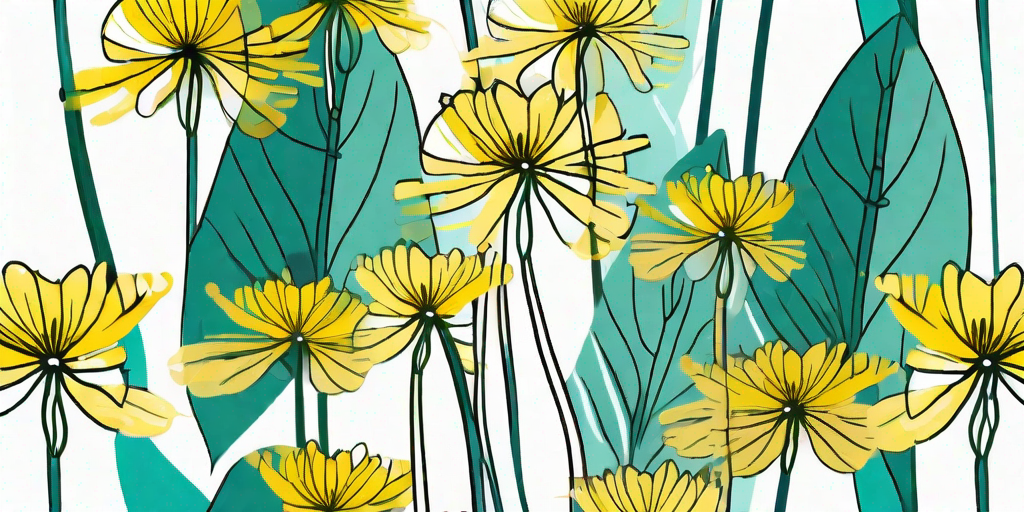
If you're a plant enthusiast looking for a unique addition to your garden, or a novice gardener seeking a low-maintenance plant to start with, Ligularia is your answer. Known for its vibrant colors and unique shape, Ligularia is a plant that can add a touch of exotic beauty to any garden. But how do you grow and care for this unique plant? Let's dive in and find out!
Understanding Ligularia: A Plant Like No Other
Ligularia, also known as leopard plant, is a genus of flowering plants that belongs to the Asteraceae family. With over 150 species, Ligularia is a diverse group of plants that are native to Europe and Asia. Known for their large, heart-shaped leaves and bright yellow or orange flowers, Ligularia plants are a sight to behold.
One of the unique aspects of Ligularia is its adaptability. It can thrive in a variety of conditions, from full sun to partial shade, and from moist soil to dry conditions. This makes it a perfect choice for gardeners who are looking for a plant that is easy to care for and can adapt to different environments.
The Different Types of Ligularia
With over 150 species, Ligularia offers a wide range of options for gardeners. Some of the most popular types of Ligularia include Ligularia dentata, Ligularia przewalskii, and Ligularia stenocephala. Each of these species has its own unique characteristics and requirements, so it's important to choose the one that best suits your garden's conditions and your personal preferences.
Ligularia dentata, for example, is known for its large, dark green leaves and bright yellow flowers. It prefers moist soil and partial shade, making it a great choice for gardens with less sunlight. Ligularia przewalskii, on the other hand, is known for its tall, slender stems and yellow, daisy-like flowers. It prefers full sun and well-drained soil, making it a great choice for gardens with more sunlight.
How to Grow Ligularia
Growing Ligularia is a relatively straightforward process, but there are a few key steps to keep in mind. Here's a step-by-step guide to help you get started:
- Choose the Right Location: Ligularia prefers a location with partial shade and well-drained soil. Avoid areas with full sun, as this can cause the leaves to wilt.
- Prepare the Soil: Ligularia prefers soil that is rich in organic matter. Add compost or well-rotted manure to the soil to improve its fertility.
- Plant the Ligularia: Dig a hole that is twice as wide and as deep as the root ball of the Ligularia. Place the plant in the hole, making sure that the top of the root ball is level with the soil surface. Fill in the hole with soil, firming it gently around the base of the plant.
- Water the Ligularia: After planting, water the Ligularia thoroughly. Continue to water the plant regularly, especially during dry periods.
Caring for Your Ligularia
Once you've planted your Ligularia, the next step is to care for it. Here are some tips to help you keep your Ligularia healthy and vibrant:
- Watering: Ligularia prefers moist soil, so it's important to water it regularly. However, be careful not to overwater, as this can lead to root rot.
- Fertilizing: Feed your Ligularia with a balanced fertilizer in the spring to promote healthy growth.
- Pruning: Prune your Ligularia in the late winter or early spring to encourage new growth. Remove any dead or damaged leaves to keep the plant looking its best.
- Pest Control: Ligularia can be susceptible to pests such as slugs and snails. Use organic pest control methods to keep these pests at bay.
Frequently Asked Questions
Is Ligularia a Perennial?
Yes, Ligularia is a perennial plant, which means it can live for more than two years. With proper care, your Ligularia can provide you with vibrant colors and unique beauty for many years to come.
Can Ligularia Grow in Full Sun?
While Ligularia can tolerate a variety of conditions, it prefers partial shade. Full sun can cause the leaves to wilt, so it's best to choose a location with some shade for your Ligularia.
Is Ligularia Deer Resistant?
Yes, Ligularia is generally deer resistant. However, this can vary depending on the specific conditions in your area. If deer are a problem in your garden, it's worth giving Ligularia a try.
In conclusion, Ligularia is a unique and beautiful plant that can add a touch of exotic beauty to any garden. With its vibrant colors, unique shape, and low-maintenance requirements, it's a plant that's worth considering for your garden. So why wait? Unleash the beauty of Ligularia in your garden today!















